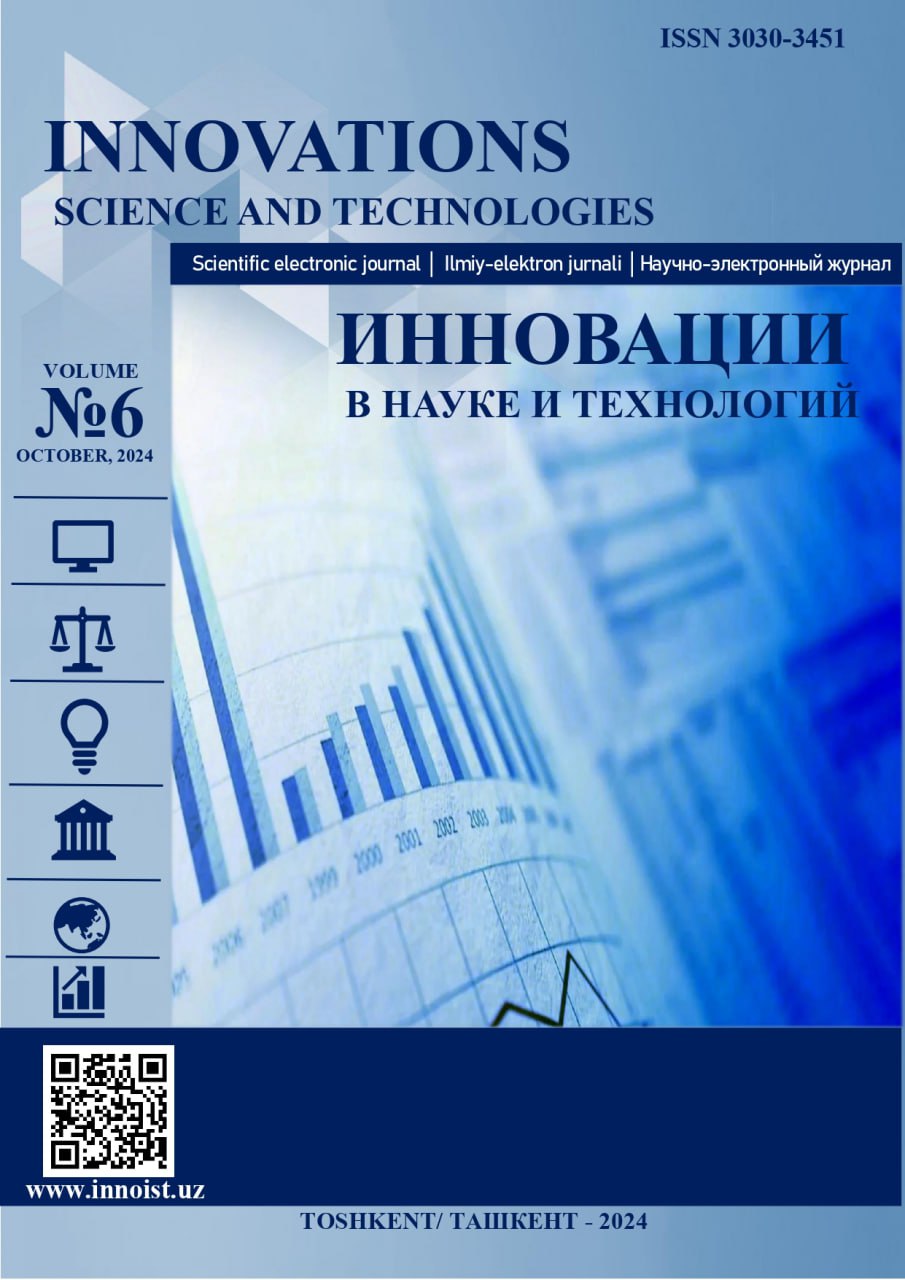DEVELOPMENT OF A DEVICE FOR PROCESSING HIGH-PRECISION ITERATIVE CODES WHEN RECEIVING DIGITALTELEVISION SIGNALS
Keywords:
iterative code, iterative convolutional code, block code, iterative coding, high precision, decoding, code distanceAbstract
Abstract – The article discusses the issues of ensuring noise immunity in digital broadcasting systems, shows the importance of the transition to the optimal code and the need to use it in the field of noiseless coding in various areas of telecommunication transmission and reception of digital signals. The previous algorithms and error-correcting coding methods based on the Gray code, which are used in multi-level digital broadcast modulation schemes to minimize the intensity of bit errors, are highlighted. A model of error-correcting coding by the Gray method and methods for estimating the probability of error for the Gray code are presented. Based on computer modeling in the Matlab 7.0 Simulink environment, a model of a noise-resistant coding system was developed, which works on the basis of a parallel-cascade high-precision iterative coding and decoding algorithm, a method for determining and estimating the probability of error is given for the high-precision iterative coding and decoding algorithm, and the complexity of constructing a high-precision iterative code. The study obtained probabilistic-energy characteristics for the Gray code and for a high-precision iterative code in various positions of phase manipulation. A comparative analysis of the energy gain G (dB) of the high-precision iterative coding algorithm with the Gray coding algorithm is performed. The simulation results in a Simulink environment of an error-correcting Gray code and a high-precision iterative code in a digital information transfer system are presented.
Downloads
References
Atadjanov Sh.Sh., “New method of increasing the efficiency of signal reception based on high-precision iterative decoding algorithms,” Collection of materials 2019 Sixteenth International Conference on Wireless and Optical Communication Networks (WOCN). Bhopal, India 19-21 december, year 2019. p.1-6. (references)
Atadjanov Sh.Sh. and others, “Simulation and analysis of high-precision iterative code with increased efficiency,” International Scientific Journal Theoretical & Applied Science. Philadelphia, USA. Year 2019, Issue 04, Volume 72. 30.04.2019. pp. 421-429.
Atadjanov Sh.Sh., Rakhimov B.N. and others, “Development of high-speed iterative code and its efficiency at digital signal transfer,” The collection of materials of the XIV International scientific and technical conference "Actual problems of electronic instrumentation", Novosibirsk, Russia, October 2-6, 2018, pp. 13-19. (references)
Atadjanov Sh.Sh., Radjapov T.D., Rakhimov B.N. “Development of criteria for determining the probability of error in digital television,” Austrian Journal of Technical and Natural Sciences, Vienna, № 1-2, 2018, January-February, P. 37-45. (references)
James L. Massey, “Threshold Decoding,” M.I.T. Press, Cambridge, Massachusetts, 1963.
Atadjanov Sh.Sh., “Improving noise immunity using high-precision iterative codes,” Collection of materials of the Republican scientific and technical conference "Followers of Muhammad al-Khwarizmi", Urgench, April 27-28, 2018, pp. 423-430.
Atadjanov Sh.Sh., Rakhmanova G.S., “Simulation and analysis of high-precision iterative code with increased efficiency,” Collection of scientific papers of the Republican scientific and technical conference "The role of information and communication technologies in the innovative development of economic sectors", Tashkent, March 14-15, 2019, pp. 223-226.
Atadjanov Sh.Sh., “The use of iterative methods based on high-precision codes and a comparative analysis of its efficiency and noise immunity with existing methods,” The collection of materials of the Republican scientific-practical conference "Innovation in the development of information and communication technologies", Karshi, April 15-17, 2019, pp. 463-464.
Atadjanov Sh.Sh. and others, “Development of error-correcting codes based on an iterative encoding and decoding algorithm,” Scientific-practical and informational-analytical journal “Muhammad al-Khorazmiy avlodlari”, No. 2 (2) 2017, pp. 46-56.
Zolotaryev V.V., Ovechkin G.V., “Noise-resistant coding. Methods and Algorithms,” Moscow, Hotline Telecom Publishing House, 2004. – 126 pp. 11. Atadjanov Sh.Sh., Rakhimov B.N., “Development of effective methods for determining the likelihood of error in digital television,” Scientific-technical and information-analytical journal Vestnik TUIT, No. 1 (45) 2018 p. 61-76.
Atadjanov Sh.Sh., “High-precise iterative decoders based on multithreshold decoding,” Republican Reports Collection scientific and technical online conference “Modern problems and their solutions information and communication technology and telecommunications.” Ferghana, April 17-18, 2020, pp. 151-154.
Atadjanov Sh.Sh., “The use of high-precision iterative codes in channels with high noise,” Republican Reports Collection scientific and technical online conference “Modern problems and their solutions information and communication technology and telecommunications.” Ferghana, April 17-18, 2020, pp. 154-159.
Atadjanov Sh.Sh., “Development of option for implementation of a highpurpose iterative coding and decoding device,” Collection of Republican Scientific Papers scientific and practical online conference “The Role and Importance of Innovative Technologies in the Digitalization of Social Spheres”. Karshi, April 29-30, 2020, pp. 414-417.
Atadjanov Sh.Sh., “Simulation model of high-precision iterative coding and decoding system,” Republican Reports Collection scientific and technical online conference “Innovative ideas in information and communication technologies and software development.” Samarkand city May 15-16, 2020, pp. 365-369.
A.A.Abduazizov, Sh.S. Atadjanov. Virtual stand for the study of channel codecs in digital information transmission systems. International Conference Innovation - 2009. October 23-24, 2009 Tashkent, Uzbekistan.
Van Trees H.L. Detection, Estimation, and Modulation Theory. Part 1, John Wiley & Sons, Inc., New York, 1968.
Lindsey W.C. and Simon M. K. Telecommunication Systems Engineering. Prentice-Hall, Inc. Englewood Cliffs, N. J., 1973.
Bahl L.R., Cocke J., Jelinek F., Raviv J. Optimal Decoding of Linear Codes for Minimizing Symbol Error Rate // IEEE Trans. Inf. Theory. – 1974. – March. – Vol. 20. – P. 284-287.
Robertson P., Villebrun E., Höher P. A Comparison of Optimal and Sub- Optimal MAP Decoding Algorithms Operating in the Log Domain // in Proc. of the Intern. Conf.On Commun. (Seattle, US). – 1995. – June. – P. 1009-1013.
Erfanian J., Pasupathy S., Gulag G. Reduced complexity symbol detectors with parallel structures for ISI channels // IEEE Trans. On Commun. – 1994. – Vol. 42. – P. 1661-1671.
Koch W., Baier A. Optumum and sub-Optumum detection of coded data disturbed by time-varying intersymbol interference // IEEE Globecom. – 1990. – December. – P. 1679-1684.
Hagenauer J., Hoeher P. A Viterby algorithm with soft-decision outputs and its applications // in IEEE Globecom. – 1989. – P. 1680-1686.
B.A. Lokshin. Digital broadcasting: from studio to TV viewer. M.: Company Cyrus Systems, 2001. P. 77-80.
BerrouС. Near Shannon Limit Error-Correcting Coding and Decoding: Turbo-Codes / C. Berrou, А. Glavieux, P. Thitimajshima // IEEE Transactions on Information Theory. – 1996. – V. 44. – № 10. – P. 1064-1070.
A.V. Kozlov. Decoding of LDPC codes in a discrete flash memory channel // ICS.2007. No. 5 (30), pp. 31-35. A.V. Belogolovy, E.A. Kruk. Multithreshold decoding of codes with low density of checks for parity // ICS. 2005. № 1 (14) . p. 25-31.
Downloads
Published
Issue
Section
License
Copyright (c) 2024 Atadjanov Sh.Sh, Yakhshiboyev R.E., Djurabaev O.T., Abdiyev N.R. (Author)

This work is licensed under a Creative Commons Attribution-NonCommercial-NoDerivatives 4.0 International License.
License Terms of our Journal











